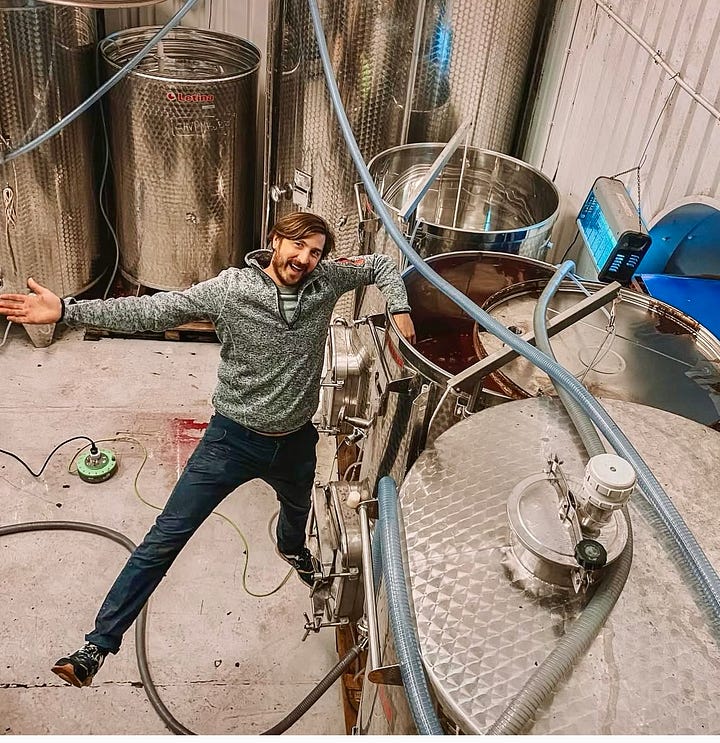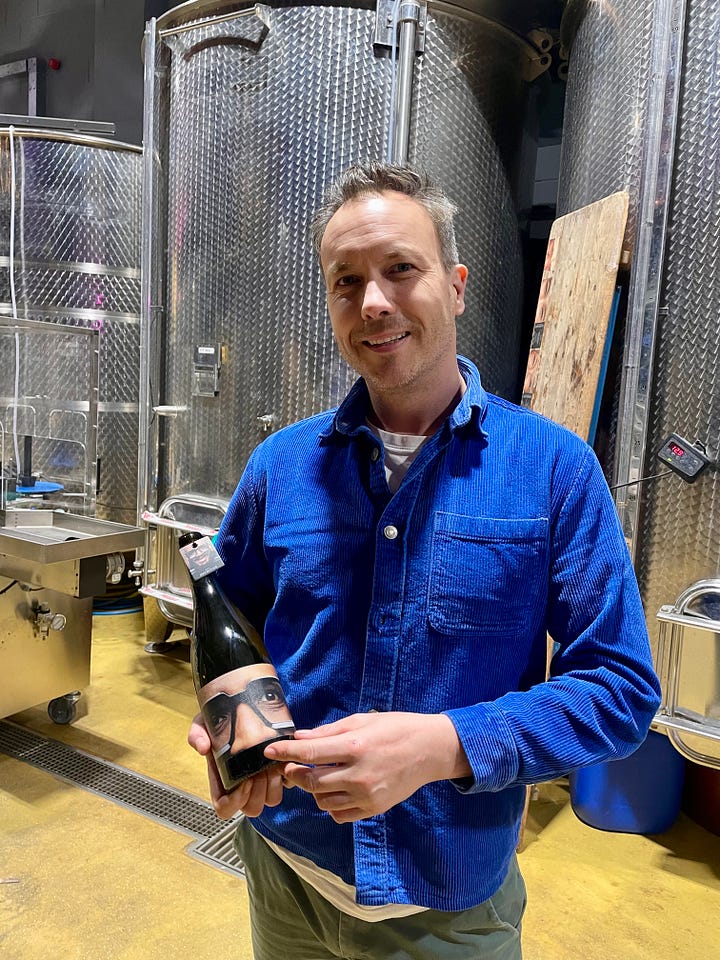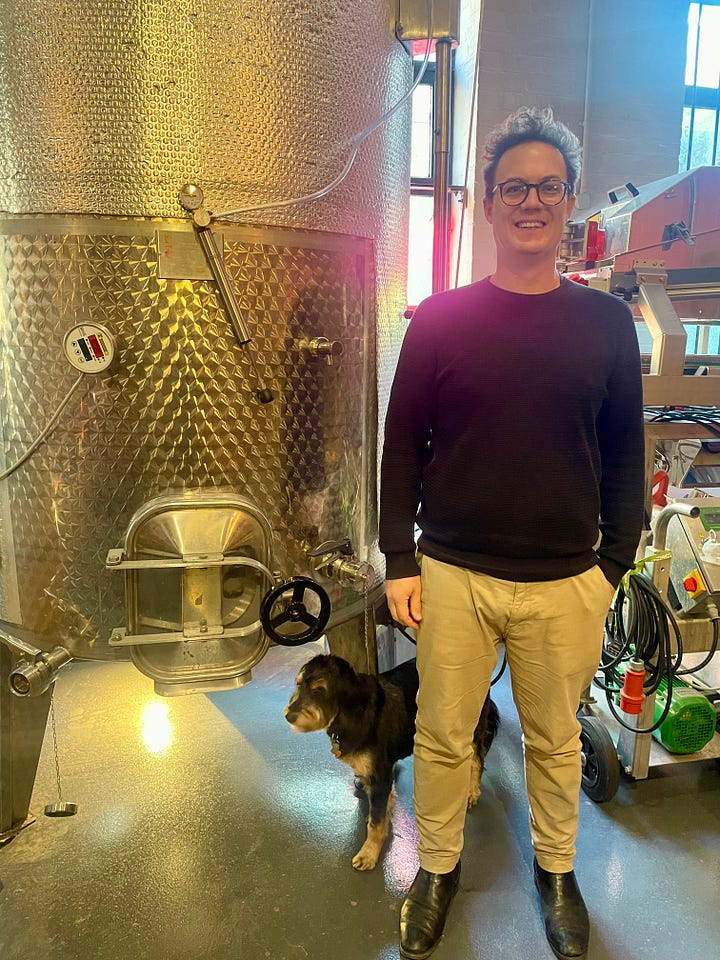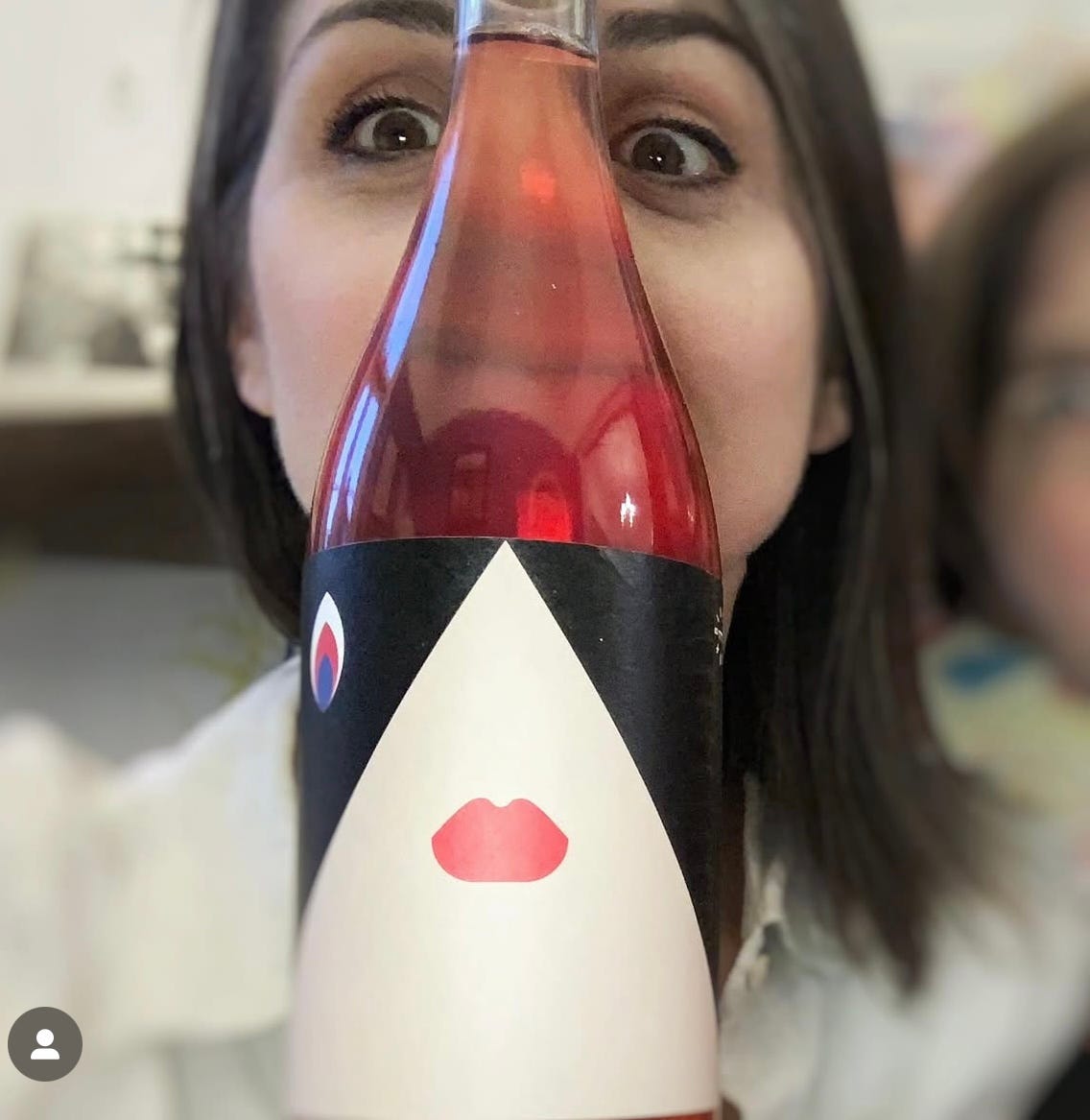Making wine in the heart of the city
London's urban wineries have opened a new front in English winemaking: I checked some of them out. Plus: what I've been drinking this week




From the street, Renegade Urban Winery does not look promising, an anonymous brick unit on industrial estate in Walthamstow, north east London. Inside, however, founder Warwick Smith is conducting wine experiments so bold that they made me laugh out loud.
Renegade’s motto is “Breaking the rules, one bottle at a time”. Renegade make about 15 different wines a year but never repeat them – around 130 since Smith started in 2016 under a railway arch in Bethnal Green. He vinifies roughly half of his wine from English grapes and half using ones bought in from Italy, Germany and elsewhere – though the last two years he has used all English fruit. As well as more conventional wines such as an Essex Chardonnay, recent Renegade offerings have included a hopped English sparkling wine, a barrel-fermented skin-contact Pfalz Grauburgunder (Pinot Gris) and an early-picked Nero di Troia.
“We’re essentially a craft brewer but with wine,” says Smith. “Let’s have a play around, let’s have a bit of fun. I really want to muck around with a Meursault in English oak.” He’s also intrigued by the idea of a high-end English sweet sparkling wine too. As he says, “The beauty of doing it in London is there’s no tradition, no appellations.”
That is a freedom relished by London’s other wineries too, even if their wines are rarely as offbeat as Renegade’s. The capital’s first urban winery was London Cru, an outgrowth of Roberson Wines, still going strong. It opened in 2013 under Australian winemaker Gavin Monery, using fruit from the south of France, Spain and Italy. I remember seeing grapes arriving there in 2014 and being amazed at how fresh and healthy they looked after their journey – though trucking fruit such distances is common enough in Australia and New Zealand. The results were surprisingly good: last year I drank a bottle of their Cabot Square London SW6 2015, made from Cabernet Sauvignon grown in the Languedoc, and it was excellent, though if I’d had to guess, I’d have said it was Australian.
What changed for London Cru – and for all the capital’s urban wineries – was the revolution in English wine of the past decade. A combination of climate change, investment and new ambition have transformed the English wine scene – thereby giving urban winemakers a ready local source of grapes. Since 2017, London Cru has used exclusively English fruit. Winemaker Alex Hurley, who hails from Melbourne, says that English wines make more sense to the consumer than English-made wines using foreign grapes. He said it was tricky selling the latter to restaurants too: where does an Earl’s-Court-made Languedoc Cabernet sit on a wine list?
Indeed London Cru now farm their own vineyard near Bolney, West Sussex, harvesting Pinot Gris, Bacchus, Pinot Noir and its early-ripening variant, Pinot Noir Précoce. Hurley works there three days a week: “If you don’t grow it yourself, have to put all your faith in grower.” It’s no more than an hour and a half from there into the winery in Earl’s Court. But he does still buy in some grapes: their very decent sparkling 2021 is a mixture of Chardonnay and Pinot Noir from Sussex and Wiltshire.
“It’s a start-up culture here,” says Hurley. “But climate is still king – and getting consistency is hard. I don’t think of it as good years and bad years - we just do different things in different years.” Reds remain the biggest challenge in the English climate, but Hurley leans into the lighter style with wines such as his Pinot Noir Précoce 23, made with whole bunch grapes: pale, with pretty red fruit, almost halfway to a light Beaujolais.
In Battersea, husband and wife team Sergio Verrillo and Lynsey Abernethy tend to make more conventional single-vineyard wines at Blackbook Winery, albeit in the unconventional setting of a 100-year-old railway arch around the corner from a concrete works and a bus depot. Their first harvest was in 2017. But Verrillo, an American, doesn’t think the urban setting is so unconventional, even if it does challenge customers’ perceptions. The US has hundreds of urban wineries, he points out: “Why wouldn’t London have urban wineries, in the most wine-centric city in the world? It just made sense to us.” Plus, he said, “I didn’t want to be a commuter.”
Blackbook concentrate on Pinot Noir and Chardonnay: “we’ve hung our hat on those two varieties,” says Verrillo. “We wanted take on the Burgundian hierarchy of cuvées.” Those wines make up their core range though they do two or three more each year working with Bacchus, Seyval Blanc and other English varieties. But of all London’s urban wineries, Blackbook has won probably the most critical plaudits. Cuvées such as their “Pygmalion” Chardonnay 2020 are serious Burgundian-style wines, that one made with fruit from Essex’s Crouch Valley, England warmest and driest grape-growing area.
And indeed all Blackbook’s wine is English. “Our ethos stems from sustainability,” says Verrillo. “We search within a two-hour radius. I think that what you have within reach here is quite a lot – there are so many great sites, and we can cherry pick.”
The urban wineries also offer Londoners a new kind of wine experience. “You can learn about wine in London without getting in a car for several hours,” says Hurley. ”For most people, it’s their first winery, it’s a date night, it’s fun - we try to give people a good time.” Says Smith at Renegade, “if you bring it into the city, you can show people how it’s done and how wine is made.” Urban wineries can also help offer a different career path to young people going into the trade. Cellar hand Anna Davis has worked at Renegade since last autumn: she had worked at wine bars in Liverpool and then went to Burgundy: “it was love at first sight.”
Such opportunities, like everything else about London’s wineries, are small scale. Their total output is low: Renegade put out up to 75,000 bottles a year, Blackbook up to 35,000. Wine bar chain Vagabond, now owned by Majestic, also have an urban winery in Battersea, making wine from English grapes, though it is closed at present as they move to a new location. Meanwhile the capital now also has a sake producer, Kanpai London Sake Brewery, making rice wine and beer near Maltby St market in Bermondsey.
Renegade run wine bars in both Walthamstow and Bethnal Green and offer their wine online, but otherwise sell it all direct to restaurants, including Fallow and Sketch. The same is true for 80 per cent of London Cru’s wines, though this year they have done their first supermarket wine, largely to raise their profile. Blackbook, meanwhile, have a national distributor, big UK importer Hallgarten, though they also distribute themselves and sell online – and, last year, ran a wine bar at the winery on Friday and Saturday nights in the summer.
For these are really wines that need to be sold to diners by their makers or by sommeliers. That’s especially true in the case of Renegade’s wines, all named after customers, whose pictures grace the labels. I particularly liked the look of Gary, an Essex factory worker with a Bacchus pét-nat named after him, though Roger, a wildly eccentric red made from Hampshire Rondo, might take some explaining to diners too.
“We have a weird Venn diagram of two groups of consumers,” says Blackbook’s Verrillo, “the traditional wine drinkers, and the natural wine fans and Gen Zs, and then in the middle these groups overlap in wine geekery.” But despite their funky labels, Blackbook don’t consider themselves “natural”, using sulphur dioxide, enzymes and filtering.
Making wine in London is never going to be easy: “It’s so stressful,” says Smith. Blackbook in particular have always been self-funded, without a parent company or outside investment. Yet the excitement walking into these places when they’re making wine is palpable. And for anyone who loves London, the sheer unexpectedness of being able to sip a glass in the place it was made, in the gritty heart of Europe’s biggest city, has to be a thrill.
What I’ve been drinking this week
Domaine Le Roc des Anges “Segna de Cor” 2022, IGP Côtes du Roussillon Villages - dark, brooding fruit (Grenache, Carignan and Syrah), a hint of smoke and a touch of wildness to it that feels appropriate for a wine from these southern French badlands. Very enjoyable (Vinum, James Nicholson Wine, Les Caves de Pyrene, from £19.50; other vintages available elsewhere.)
Charalaboglou Koiniariko in Anthesis 2021, PGI Serres - this Greek red is unusual both in that’s from an obscure appellation near Drama, in the north east, and made from a rare local grape I confess I hadn’t previously heard of, Koiniariko. It’s a similar kind of weight to many Greek reds made from Agiorgitiko - and likewise boasts spicy black fruit - yet it’s quite different: there’s a firm core, a note of graphite and fine tannins that put me in mind of a northern Rhône Syrah. Worth trying (Cellar Door, £25.95.)
Dirupi “Olé” 2023, Rosso di Valtellina - I’m a big fan of Nebbiolos from the Valtellina, the Alpine area in the far north of Lombardy. They’re generally lighter and more approachable than Piemonte Nebbiolos like Barolo: this one is quite pale, floral, with sweet fruit and hint of bitterness - so elegant (Buon Vino, Cave Bristol, Passione Vino, from £24.)





Also got a case of their 2019 Crush and Brisk Blanc de Noirs last week
I'm too old for clubs, too cheap for Michelin starred restaurants, maxed out on museums and uninterested in shopping - urban wineries seem like just the thing for my next visit to London.